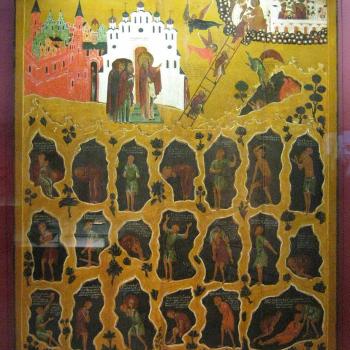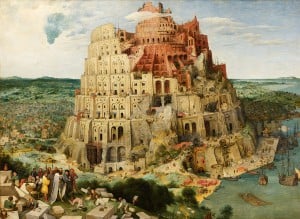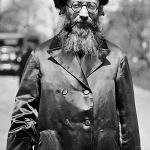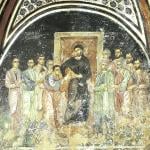The challenge to Catholic higher education today is different from those of a generation or two ago. The story of twentieth century Catholicism is a
story of immigrants struggling to make their way in an often hostile climate; they built parishes, schools, colleges, nursing homes, and cemeteries to insure the welfare of their own from birth to death. Several books outline the story (in no particular order):
- Charles Morris’s American Catholic: The Saints and Sinners who Built America’s Most Powerful Church
- John T. McGreevy, Catholicism and American Freedom: A History
- Jay P. Dolan, In Search of an American Catholicism: A History of Religion and Culture in Tension
- Mark Massa, S.J., Catholics and American Culture: Fulton Sheen, Dorothy Day, and the Notre Dame Football Team
The story of Catholics in the 20th century is about the growing power of Catholics in American culture, culminating in the election of one of their own, John F. Kennedy, as president.
The story of Catholic colleges and universities runs parallel to this larger story: a story of “contending with modernity,” to use the title of a fine book by Philip Gleason (Contending with Modernity: Catholic Higher Education in the Twentieth Century). Catholic colleges and universities were founded to serve the immigrant masses. My own institution, Boston College, is an excellent example: its foundation was precisely to serve the Irish lads who had no hope whatsoever of scaling the walls of Protestant Harvard. Kathleen A. Mahoney chronicles this story in her book Catholic Higher Education in Protestant America: The Jesuits and Harvard in the Age of the University.
A decisive moment came in the 1967 Land O’Lakes statement, “The Idea of the Catholic University,” signed by leaders in Catholic higher education, including the presidents of Notre Dame (the recently deceased Theodore Hesburgh, C.S.C., who hosted the event), Boston College, Saint Louis University, Fordham University, and the University of Puerto Rico (the future cardinal archbishop of Washington, Theodore McCarrick). That statement articulated a great hope:
one of the basic convictions of the study group is that the Catholic university not only can and must be a university in the authentic sense of the word, both traditional and modern, but that, in fact, a Catholic university properly developed can even more fully achieve the ideal of a true university.
In order to be a true university, the document states, a Catholic university must be fully modern.
The Catholic University today must be a university in the full modern sense of the word, with a strong commitment to and concern for academic excellence. To perform its teaching and research functions effectively the Catholic university must have a true autonomy and academic freedom in the face of authority of whatever kind, lay or clerical, external to the academic community itself. To say this is simply to assert that institutional autonomy and academic freedom are essential conditions of life and growth and indeed of survival for Catholic universities as for all universities.
The above-mentioned Philip Gleason described the document as a “declaration of independence from the hierarchy and a symbolic turning point” (cited in David O’Brien’s article in Boston College Magazine, Winter 1998). David O’Brien explains:
[Theodore Hesburgh] argued that during the Reformation and the French Revolution secular governments had taken control of the great Catholic universities of the Middle ages, leaving the Church intellectually destitute when it confronted modernity in the 19th century. Confined to seminaries, “an outdated, repetitive and uncreative theology” dominated the Church until a new theology emerging from European universities helped lay the groundwork for Vatican II, he said. The Church in the United States could re-create real Catholic universities, but only if Catholics took modern intellectual life seriously.
In this assessment, Hesburgh was echoing the strong critiques of Monsignor John Tracy Ellis of a generation earlier. In 1955, Ellis lambasted the state of Catholic intellectual life, tracing its roots and suggesting that the demands of modern life call for the contributions of “the oldest, wisest, and most sublime tradition of learning that the world has ever known.” Hesburgh, like Ellis, wanted to see a vibrant Catholic intellectual life, and reasoned that it could unfold only if allowed to prosper on its own terms.
The document focuses particularly on the role of theology:
Since the pursuit of the theological sciences is therefore a high priority for a Catholic university, academic excellence in these disciplines becomes a double obligation in a Catholic university.
Theology must be in dialogue with other disciplines:
To carry out this primary task properly there must be a constant discussion within the university community in which theology confronts all the rest of modern culture and all the areas of intellectual study which it includes.
Theology needs this dialogue in order:
A) to enrich itself from the other disciplines;
B) to bring its own insights to bear upon the problems of modern culture; and
C) to stimulate the internal development of the disciplines themselves.
And later:
there will necessarily result from the interdisciplinary discussions an awareness that there is a philosophical and theological dimension to most intellectual subjects when they are pursued far enough.
The key question for today–an age in which rich Catholic subcultures have gone mainstream, and in which there are diminished signs of Catholic life, as Peter Steinfels has argued in his book A People Adrift: The Crisis of the Roman Catholic Church in America–is how to form leaders and scholars that can shape a Catholic university. There are really only two options, which I shall describe (clunkily) as “the Benedict option” and “the Francis option.” Note that in distinguishing these options I am pointing to methods of apostolic work and not differences in doctrine: differences more like those between various religious orders within the Church, say the Benedictines and the Franciscans, than between people of various religions.
The Benedict option is reflected in Pope Benedict XVI’s appropriation of Toynbee’s reference to the creative minority, that small group of people who aim to change the world as leaven. A number of small- to medium-sized younger Catholic colleges and universities embrace this ideal. The Newman Guide to Choosing a Catholic College favors this Benedict option.
The Francis option is evident in his apostolic exhortation The Joy of the Gospel:
Universities are outstanding environments for articulating and developing this evangelizing commitment in an interdisciplinary and integrated way. Catholic schools, which always strive to join their work of education with the explicit proclamation of the Gospel, are a most valuable resource for the evangelization of culture, even in those countries and cities where hostile situations challenge us to greater creativity in our search for suitable methods.
The Francis option stresses evangelization of culture, which always involves the difficult discernment of what is happening in a host culture. Like Francis of Assisi, it is missionary, whereas the Benedict option is fundamentally monastic. Note that both impulses have been foundational in Catholic history, and indeed both impulses are important in the landscape of university education today. In their book Catholic Higher Education: A Culture in Crisis, Melanie M. Morey and John J. Piderit, S.J. point to related models of Catholic higher education in the United States. What I am describing as the Benedict option corresponds to their descriptions of the “immersion” model, whereas my Francis option represents the various attempts at evangelizing culture undertaken in their “persuasion” model.
I teach in a university that was once embraced the Benedict option but now looks far more like the Francis option. It is tempting to conclude that the latter constitutes a kind of decline, a move away from a rich Catholic culture to one in which a rootless cosmopolitanism wins the day. Yet I am not so quick to make that conclusion. What I see in this and many other institutions are creative attempts to rediscover the roots of faith anew, in dialogue with people who encounter them sometimes for the first time. Seeing our faith through their eyes– my students’ eyes– is to be part of a rich intellectual culture. Do we always get it right? No, but like the best missionaries we are always trying to balance fidelity and friendship, remembrance of the past with openness to the future.
The Benedict option is nevertheless an important one, and there are certainly times in my work when I find myself drawn to that option. Monasteries, and Benedict option universities, are places that cling tenaciously to the richness of Catholic tradition to insure its transmission to future generations. That is no small matter. My hope is that both options will contribute to the mission of the Church in its intellectual shape: a mission of learning for the sake of love of God and neighbor.















